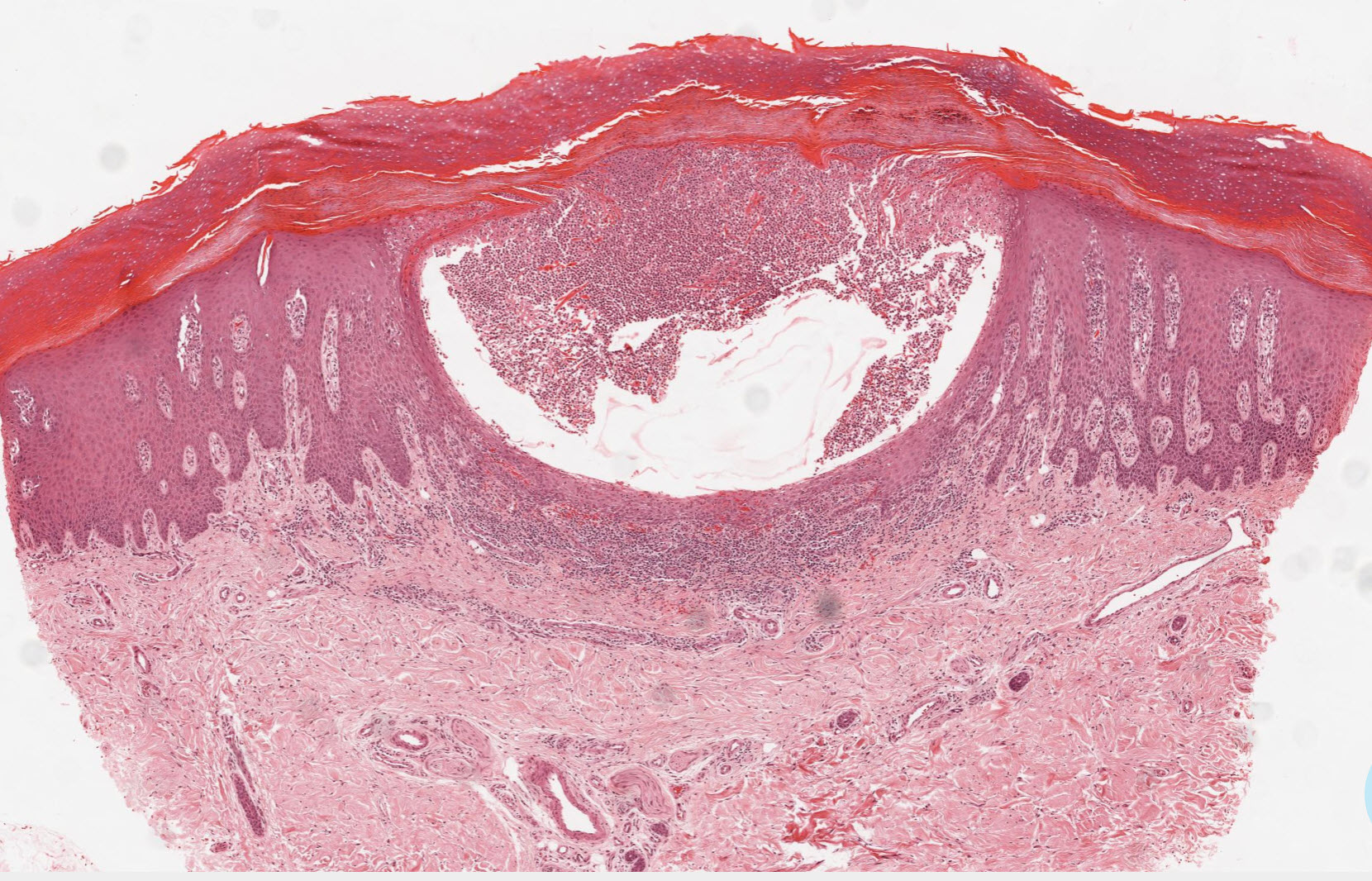

Diagnosis: Acrodermatitis continua
Description: pustules on nail bed and nail matrix with nail atrophy
Clinical Features: Pustules
Pathology/Site Features: Fingertips
Sex: M
Age: 62
Submitted By: Ian McColl
Differential DiagnosisHistory: Localised pustular psoriasis involves the palms and soles and sometimes the terminal digits from the DIP joint distally. (The latter is known as acrodermatitis of Hallopeau but it is psoriasis).Localised pustular psoriasis of the palms and soles presents as subcorneal pustules which rapidly dry out to form a brown scale which then peels away. Lesions are often at different stages as can be seen in the first image below. Patients usually have no evidence of conventional psoriasis elsewhere. The condition can be very persistent. It responds to strong topical steroids often under occlusion at night with Glad Wrap eg Diprosone OV ointment. Some cases require oral retinoids such as Acetretin 25-50 Mgs daily gradually reducing to a lower maintenance dose or even methotrexate 10-15mgs weekly. Recalcitrant cases respond to the new anti TNF monoclonal antibody drugs.
Differential Diagnosis Consider infected pompholyx eczema, tinea pedis, rarely Reiter's syndrome and in immunosuppressed or in infants, infected scabies!
Dermnet on Palmoplantar psoriasis
Another form of localised pustular psoriasis is called acrodermatitis continua of Hallopeau. This is a sterile pustular disorder starting on the tips of the fingers or toes and spreading proximally. The nail ends up being destroyed and the terminal digit may atrophy! This is a very rare condition.Use strong topical steroids under occlusion
Differential Diagnosis Acute paronychia, pustular pompholyx, contact dermatitis.
Dermnet on palmoplantar pustulosis
See Virtual Slide in Path Presenter


